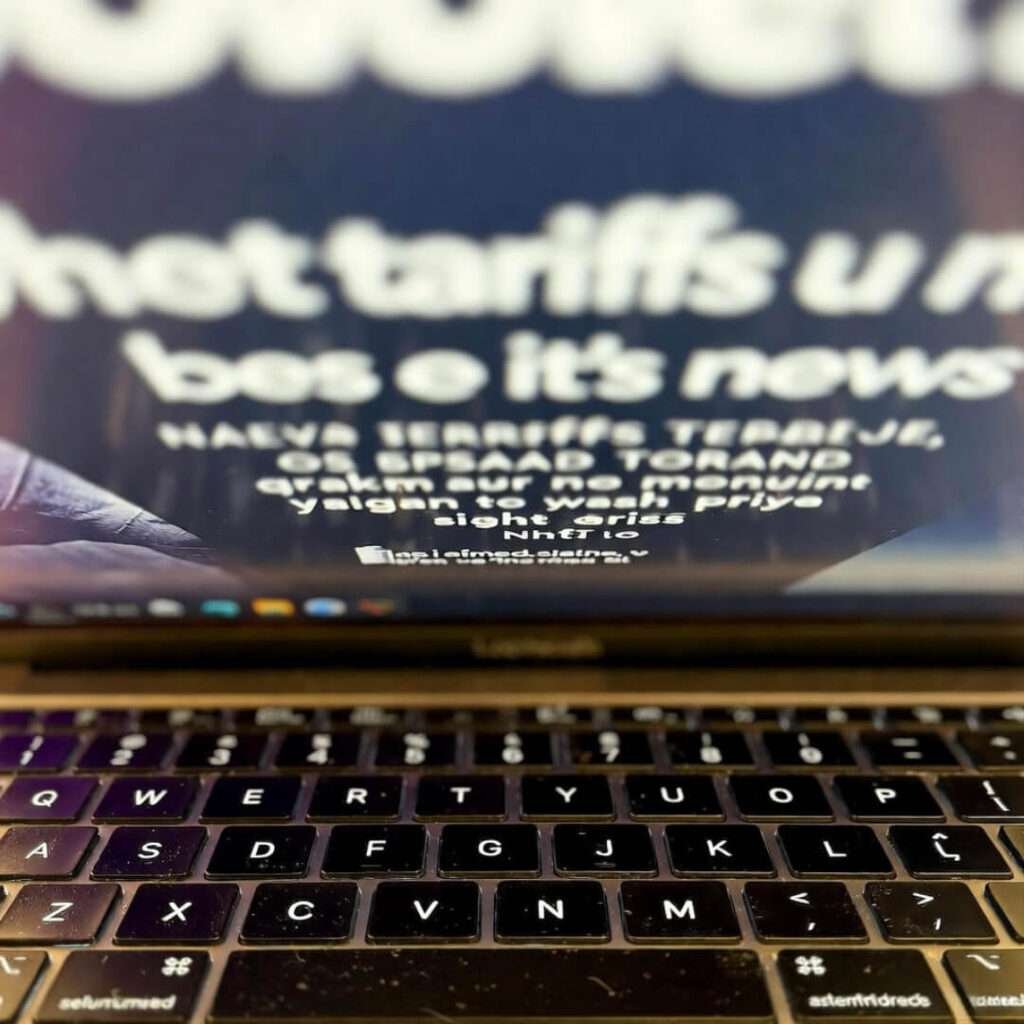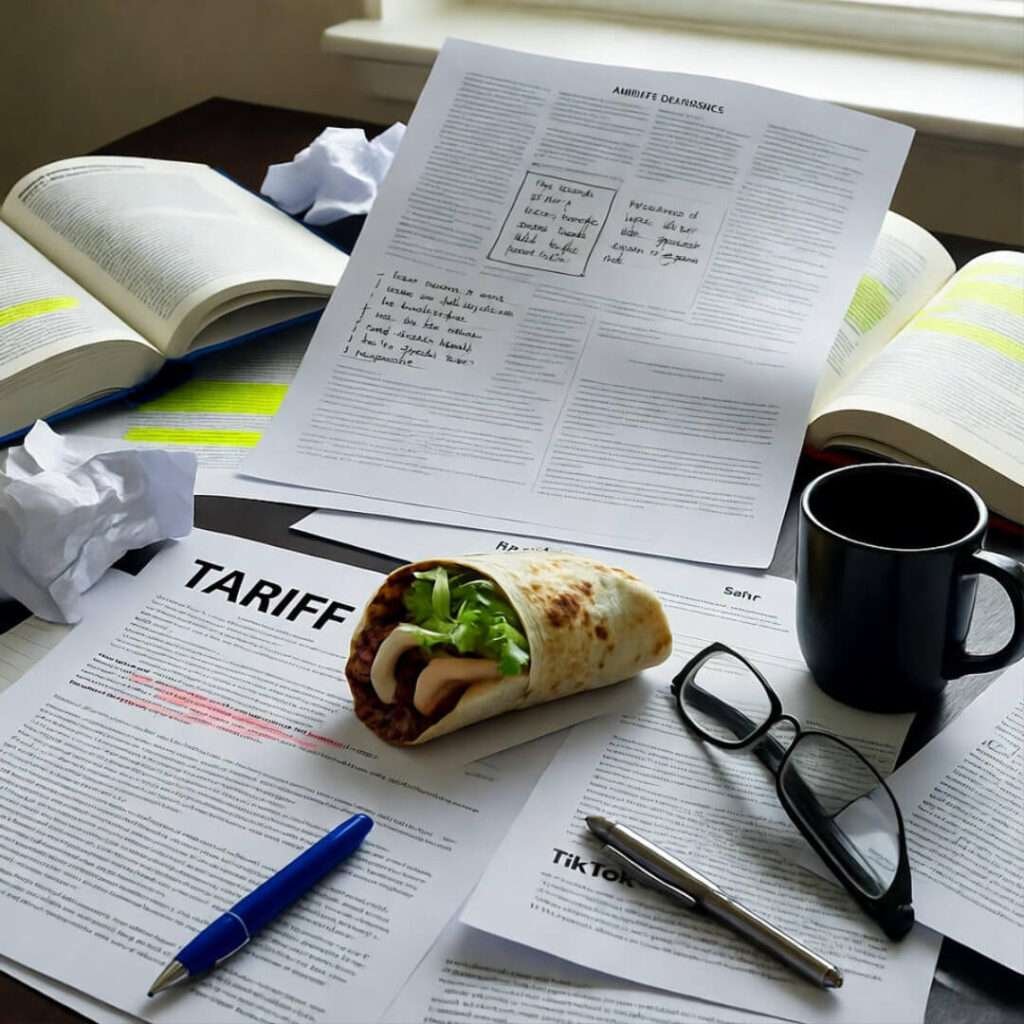Okay, y’know, what is a tariff? I mean, seriously, I had to pause my doomscroll last week—sitting here in my rainy Seattle living room, the kind where the windows fog up from my overbrewed coffee and the neighbor’s weed wafts in like an uninvited tariff itself—and actually look it up because my feed just… poofed. TikTok gone, banned or whatever drama, and suddenly everyone’s yelling about tariffs tying into this mess. It’s like, dude, I was mid-dance challenge, feeling all connected to the world, and bam—trade walls slapping me in the face. Embarrassing? Totally. I once thought tariffs were just fancy parking tickets for boats. But nah, they’re these government slaps on imports, taxes to make foreign stuff pricier so we buy American. And right now, as an American glued to my screens, it’s hitting tech like a freight train full of microchips.

What Is a Tariff, and Why Am I Freaking Out About It in My Pajamas?
Look, let’s break this down before I spiral—’cause I did, last Tuesday, when my Amazon cart for new earbuds jumped 20 bucks overnight. What is a tariff, stripped bare? It’s basically Uncle Sam saying, “Hey, China (or whoever), you wanna sell us your shiny gadgets? Cough up extra cash at the border.” Started way back with folks like Hamilton dreaming up protectionism, but now? It’s Trump’s ghost and Biden’s tweaks cranking it up on everything from steel to semiconductors. I remember my first “aha” moment: scrolling X (er, Twitter, whatever) during a power outage here, flashlight on my phone casting weird shadows on my cat’s judgmental face, and reading how these trade tariffs on tech are jacking up costs for, like, EVERYTHING I touch daily.
- First off, the basics: Tariffs hike the price of imports—think 25% on electric vehicles or 100% on those sneaky Chinese EVs that look cooler than mine anyway.
- Then the ripple: My buddy in Austin, who’s all into building drones, texted me panicking ’cause component prices spiked, killing his side hustle. Me? I felt that in my gut, like when I botched a job interview last year and drowned sorrows in overpriced takeout—now that’s tariffed too.
- And the irony? We’re supposed to “buy American,” but half my laptop’s soul is still imported. Contradiction city, man. I love the idea, hate the wallet sting.
Anyway, digress: That power outage? Turned into me rage-binging tariff docs till 4 a.m., highlighter in teeth, crumbs everywhere. Raw truth? I’m all for shielding US jobs—grew up hearing Dad gripe about factories closing in Ohio—but damn, it feels like punishing my impulse buys.
How TikTok Bans Tie Into This Tariff Madness—My Cringey Personal Low
Oh god, the TikTok ban. I can’t even. Picture this: Me, 35 and single, attempting “relatable adulting” videos in my tiny kitchen—spilling oat milk everywhere, captioning it “tariff-proof breakfast hacks” before I even knew what is a tariff meant. Then poof, app’s on the chopping block, national security excuses flying, but underneath? It’s all US tariffs impact bleeding into app stores and data flows. Like, bans as soft tariffs on digital imports, forcing ByteDance to sell or scram. I froze mid-scroll in a coffee shop, barista yelling “grande or venti?!” while my brain short-circuited. Embarrassing admission: I cried a little. Not full sobs, but that prickly-eyed thing, ’cause TikTok was my dumb escape from adulting fails.
Here’s the unfiltered chaos: One day I’m dueting cat memes, next I’m googling “tariff explained” like a conspiracy theorist, connecting dots from EV duties to app crackdowns. Surprising reaction? I got weirdly patriotic—waved a tiny flag from a forgotten July 4th BBQ, feeling all “USA!”—but then my next DoorDash (tariffed limes, anyone?) reminded me it’s not that simple. Mistakes? Yeah, I once Venmo’d a friend for “tariff therapy” after overpaying for AirPods. Self-deprecating? Understatement.
Tariff Effects on Gadgets: Stories from My Cluttered Desk Drawer
Zoom in on my life: That drawer? Overflowing with half-dead chargers from Shenzhen, now costing an arm ’cause of these American tech tariffs. I learned the hard way—tried fixing my old phone post-ban panic, ordered parts, and waited three weeks while duties piled on. Sensory hell: The wait, staring at tracking apps in dim lamplight, rain pattering like impatient fingers, me muttering “this is what globalism’s revenge feels like.”
Tips from my flawed playbook, ’cause why not share the mess?
- Hunt local: Switched to US-made cases—clunky, but hey, no tariff guilt. (Pro tip: Etsy sellers are tariff-free unicorns.)
- Bulk up pre-hike: Hoarded cables like a doomsday prepper; now my junk drawer laughs at me.
- Go secondhand: Facebook Marketplace saved my butt—bought tariff-dodging used tech, felt like a savvy rebel till I dropped it in the sink.
But contradictions! I preach this, yet caved and grabbed a tariff-bumped smartwatch last weekend. Hypocrite much? Yup. It’s human.

Wrapping This Tariff Rant: My Cautious Hopes and Your Move
Whew, from what is a tariff confusion in my foggy Seattle haze to untangling TikTok’s tariff-tangled fate, this has been my brain dump—raw, rambling, and yeah, a bit all over. I started embarrassed, ended… hopeful? Like, maybe these tech trade wars push us to innovate without copying—US chips gleaming brighter, apps born here that don’t spy. But honestly, it’s scary; my next gadget splurge might bankrupt my coffee fund. Flawed take? Absolutely. What’s yours?
Hit me in the comments—ever had a tariff sneak up on your cart? Share your chaos, or better, check out this explainer from the WTO on tariffs for the non-me version, or Brookings’ deep dive on tech tariffs to fact-check my mess. And yo, subscribe if you dig these unfiltered US-life rants—next one’s on AI ethics, probably with more cat cameos. What’s one tariff hack you’ve nailed? Spill.

(Outbound links for cred: Also peeking at CFR’s tariff timeline kept me from total fiction.)




